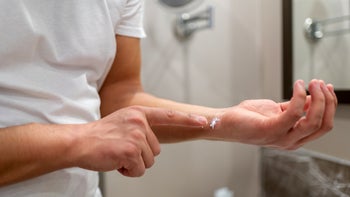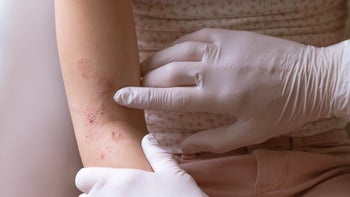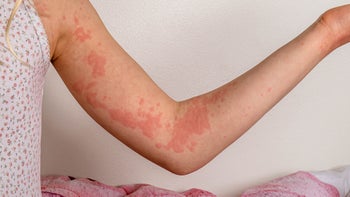
Can Stress Cause Rashes? Here’s What Stress Hives Look Like (With Pictures)
Key takeaways:
Stress can trigger hives (urticaria), a type of rash.
Hives are raised, itchy bumps on the skin. They can be small and round, or large and irregular in shape.
Stress management, over-the-counter medications, and home remedies can help ease discomfort from stress hives.
Table of contents
People respond to stress in different ways. For some, stress can cause emotional reactions like anger or anxiety. Other people may cope by withdrawing emotionally from a stressful situation. But, for many people, stress can play out physically. Physical symptoms of stress can vary for different people. They include flushing, heart palpitations, and insomnia — as well as hives.
About 20% of people of all ages will experience hives at some point. Studies show that women are more affected by hives than men.
Let’s take a closer look at how stress can trigger or worsen hives in people who get them.
Search and compare options
Can you get rashes and hives from stress?
Yes, stress can trigger rashes and hives. The connection between your mind and skin is well known. So, it’s not a surprise that stress can worsen many different skin rashes, including acne, eczema, and psoriasis.
Hives are another type of rash that can be triggered by stress and anxiety. For this reason, hives may sometimes be called “stress hives” or a “stress rash.”
When you’re stressed, your body sends a message to its immune cells, telling them to release powerful chemicals — notably, histamine. Histamine triggers inflammation and is responsible for the itchiness associated with hives.
Symptoms of stress hives
Hives have a recognizable pattern and can come and go very quickly (within hours) without leaving a trace. Hives caused by stress look the same as any hives. They look like swollen, raised patches of skin called welts or wheals. These welts are smooth but can feel itchy.
The exact color of hives varies depending on your skin tone. They look red in fair skin tones. In darker skin tones, they look skin-colored with subtle pinkness.
Pictures of stress hives
Here are some pictures of stress hives.
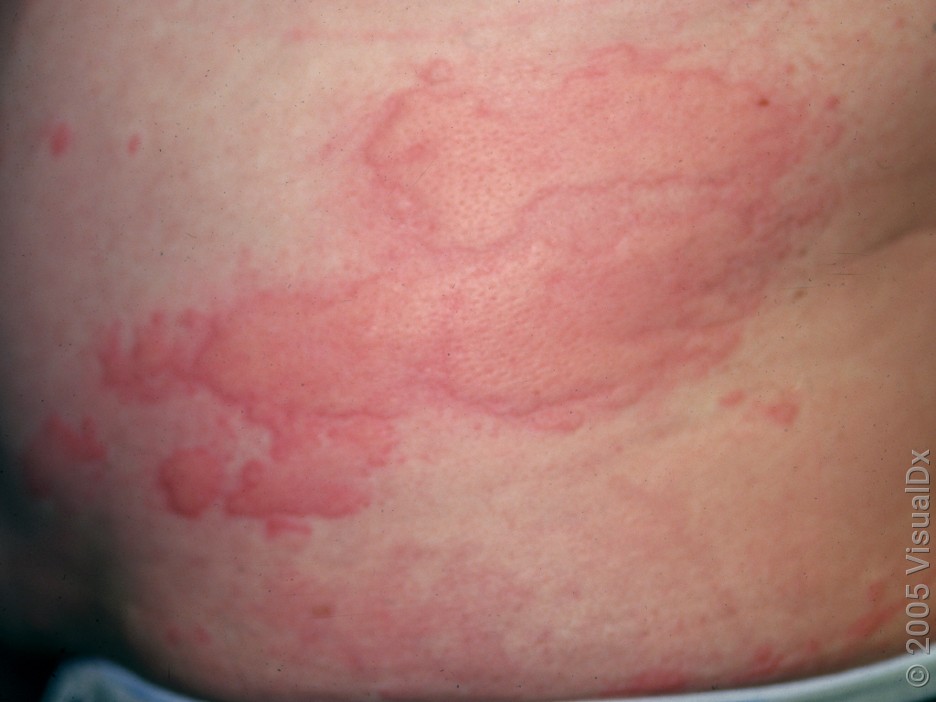
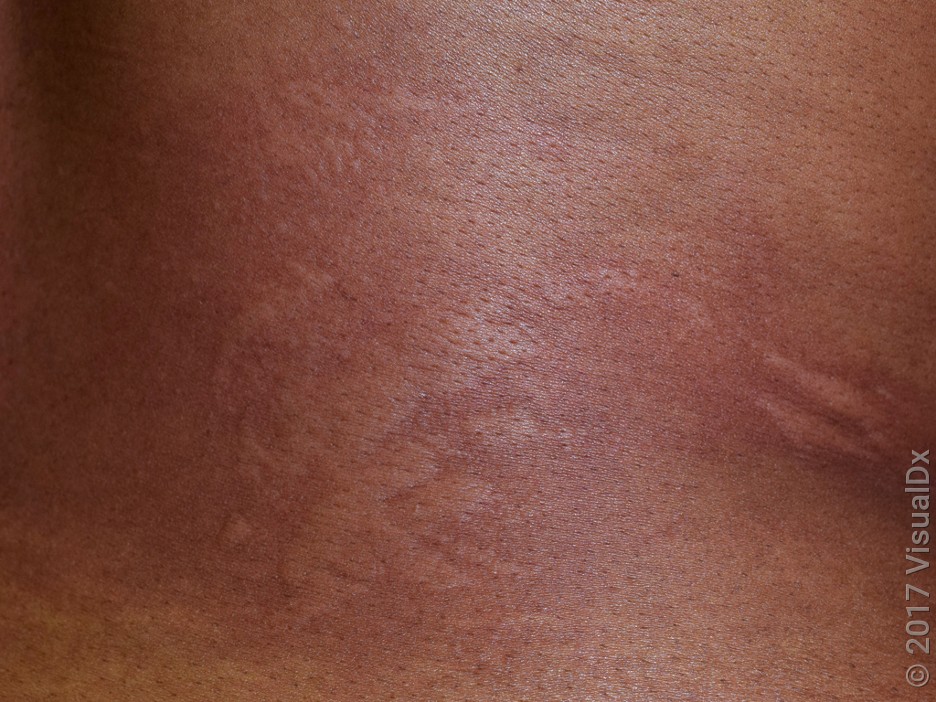
When you press against them, stress hives become blanched, meaning they briefly turn white. Welts can be small (like a mosquito bite). Or they can grow quite large (to the size of your hand or bigger). Stress hives can be oval, round, or ring-like. But they can take on irregular shapes too.
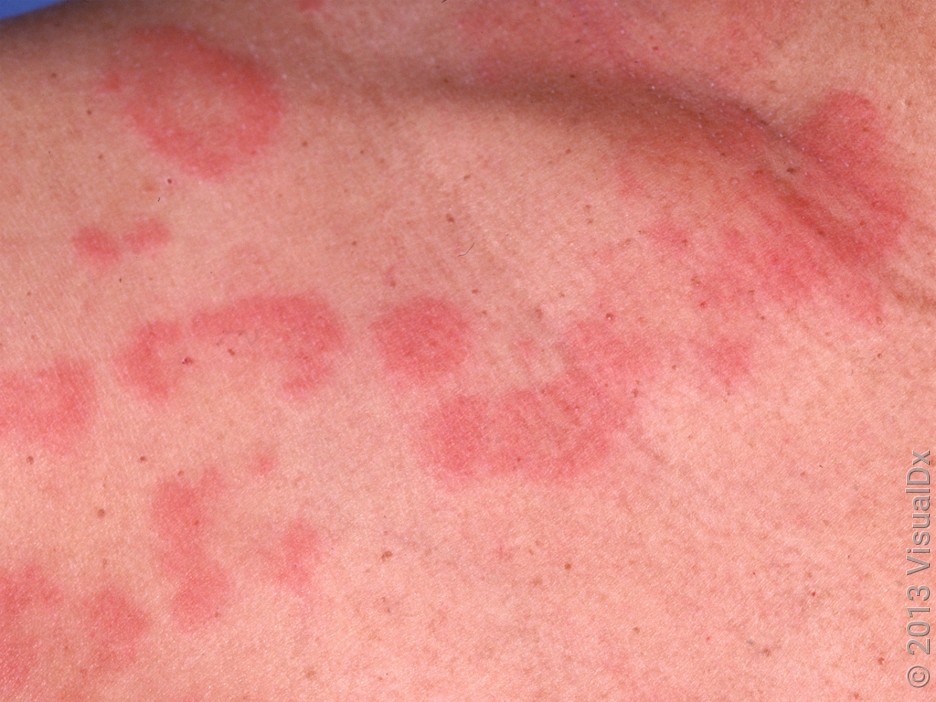
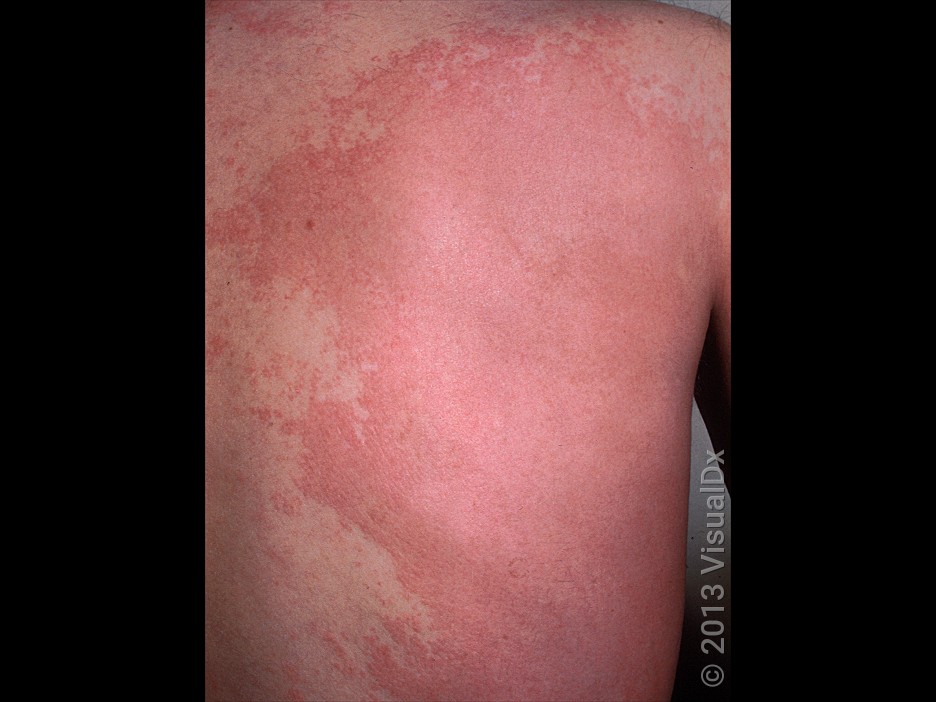
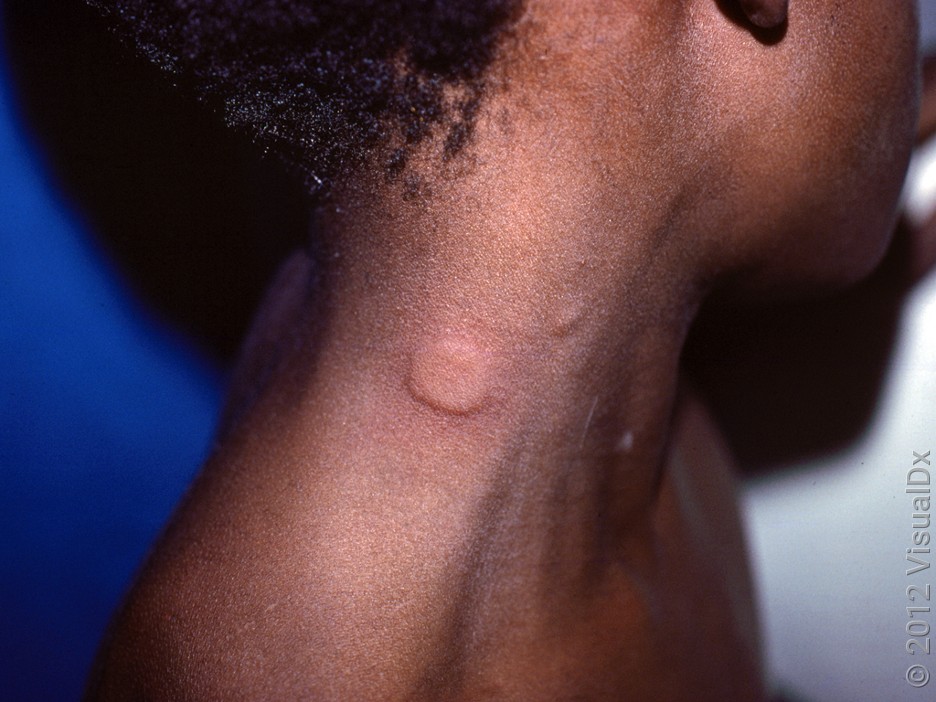
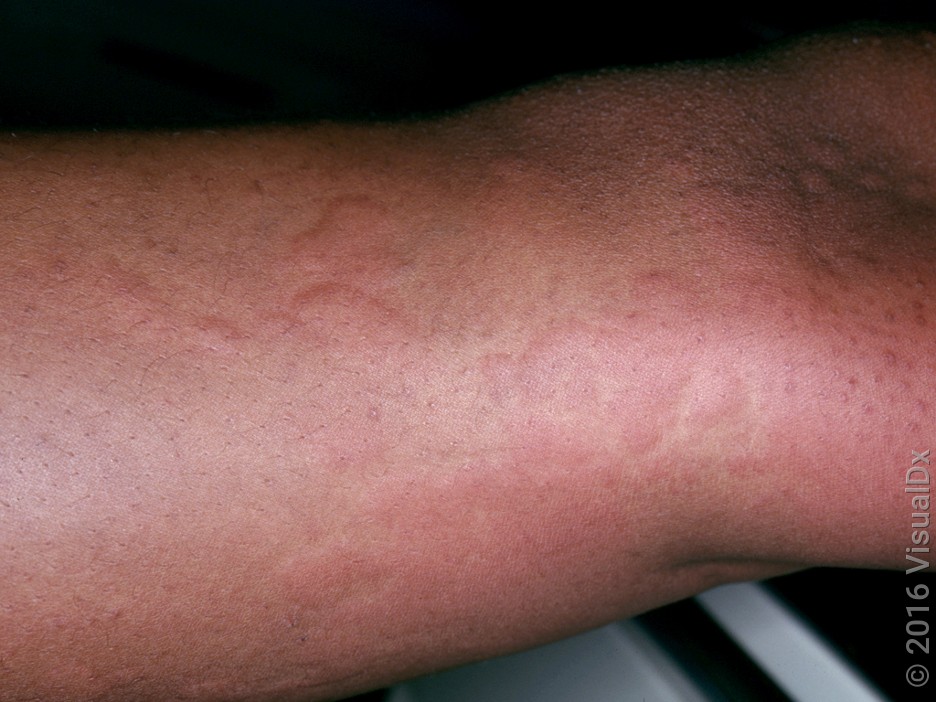
Where do stress rashes or hives usually develop on the body?
Stress rashes and hives can occur on any part of your body. But they most often show up in the:
Upper arms
Abdomen
Chest
Back
Upper legs
Stress rash treatments
Most stress rashes respond to simple home treatments. Here are some tips for getting rid of stress hives.
What does an allergic skin reaction look like? Learn to identify and treat contact dermatitis with these tips from a dermatologist.
The most common rashes in kids: Rashes are pretty common in kids. Here’s a guide with pictures to the most common culprits.
Chronic stress and your health: Stress is a normal and inevitable part of life. But long-term stress can have serious effects on your health. Learn how and what you can do about it.
1. Home remedies
There are several treatments you can try at home to ease the discomfort from stress hives:
Apply cool compresses, like a wet washcloth, to the affected area.
Use an oatmeal bath to help with the itchiness.
Avoid triggers that could worsen your rash, like heat or tight clothes.
2. Over-the-counter medications
Some over-the-counter (OTC) antihistamine medications can also help get rid of hives. These medications block the effects of histamine and ease inflammation and itch:
Diphenhydramine (Benadryl)
Cetirizine (Zyrtec)
Fexofenadine (Allegra)
Keep in mind that some antihistamines, like Benadryl, can cause you to feel sleepy or tired. If you have questions about side effects, reach out to your healthcare professional or pharmacist.
3. Stress management
If recurrent stress is a problem, consider steps to manage your stress. Tips and tricks to add to your toolbox may include:
Mindfulness and deep breathing exercises
Counseling
Breaks from news or social media
Are stress hives dangerous?
Stress rashes like hives aren’t dangerous in themselves. But hives themselves can be a sign of other dangerous problems, like angioedema or anaphylaxis. So, before you assume that your hives are just caused by stress, it’s important to make sure that they’re not being caused by something more serious.
Anaphylaxis and angioedema can cause life-threatening symptoms, such as:
Swelling around the eyes or the lips or tongue
Trouble breathing
Shortness of breath
Wheezing (when your breathing sounds like a whistling sound)
Dizziness
If you’re experiencing these symptoms, call 911 right away for emergency medical attention.
How long do stress rashes and hives typically last?
Stress rashes or hives usually disappear within a few hours or days. Try to avoid scratching your rash. This will help it heal faster without leaving behind marks.
Sometimes, stress hives can come back repeatedly over weeks or months. When hives last longer than 6 weeks, it’s called chronic urticaria. If this is your situation, it’s time to get the help of a professional. Your primary care provider or dermatologist can help you get to the bottom of why this is happening and recommend other treatment options.
Frequently asked questions
High blood pressure is often called a “silent illness” because it doesn’t normally cause any symptoms. Because high blood pressure is so common, though, lots of people experience a rash or other symptoms while having high blood pressure. But that doesn’t mean that high blood pressure is causing those symptoms. High blood pressure by itself doesn’t cause a rash.
Hives (also called urticaria) are one type of skin rash. Like other rashes, hives can be very itchy. But that’s where the similarities end.
Hives happen in response to a specific trigger, such as stress or allergies. Other common skin rashes — like psoriasis or eczema — are different. They happen when your skin is inflamed. While these skin problems aren’t necessarily caused by stress, stress can make them worse.
The bottom line
Stress is a normal part of life. But longstanding or repeated stress can take a toll on your mental and physical health. And, for some people, this can show up as stress hives. Most hives come and go within a few hours. But if that’s not the case for you, or if stress hives come back again and again, it’s time to get professional help.
Images used with permission from VisualDx (www.visualdx.com).
Why trust our experts?



References
American Academy of Allergy, Asthma & Immunology. (n.d.). Angioedema defined.
American Academy of Dermatology Association. (n.d.). 10 ways to get relief from chronic hives.
American Family Physician. (2017). Hives.
Deacock, S. J. (2008). An approach to the patient with urticaria. Clinical & Experimental Immunology.
Ludmann, P. (2021). Hives: Signs and symptoms. American Academy of Dermatology Association.
MedlinePlus. (2017). Histamine: The stuff allergies are made of.
Tarbox, J. A., et al. (2018). Angioedema. JAMA.













